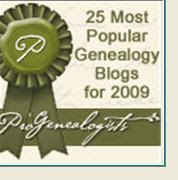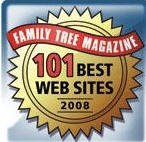The Los Angeles Jewish Journal focuses on Ashkenazi-Sephardic cross-cultural assimilation. Not out from Judaism, but between the two major groups of Jews as delineated by origin, Eastern European and the widest definition of Sephardic roots.
Writes David Suissa:
For several decades now, one of the most dreaded words in the Jewish community has been the A word: assimilation. How often have we heard rabbis, pollsters and Jewish leaders remind us that America has “loved Jews to death,” to the point that high intermarriage rates and other forms of assimilation have threatened the future of our little tribe in an ocean of loving gentiles?
Thankfully, though, if you look around our community, you will see numerous examples of assimilation of a whole other kind — one that shines a more hopeful light on the Jewish future.
This is the assimilation between Ashkenazim and Sephardim.
After centuries of mutual distancing, these two culturally distinct Jewish communities now represent one of the great stories of the ingathering of exiles, a story of maintaining and sharing traditions in the midst of a long-delayed family reunion. And there’s no better place in the Jewish world to see this reunion than in Los Angeles.
Suissa describes two examples of Ashkefard assimilation in a school - where an Ashkenazi educator from a Reform school is helping a strictly Orthodox Sephardic rabbi create a cutting-edge pre-school - and in a shul - Sephardic Temple Tifereth Israel at Rabbi Daniel Bouskila’s daughter's bat mitzvah.
Writes Suissa, "My second recent experience of Ashkefardic immersion came at a bat mitzvah last Shabbat that will surely go down as a first in multicultural assimilation."
Bouskila, like Toledano, is as Sephardic as baklava and Turkish coffee. Since he married a woman who’s as Ashkenazic as kreplach and matzah ball soup, they have children who are going through, if not an identity crisis, then at least a pleasant overdose of ethnic variety. With Sephardic and Ashkenazic family members in the audience, what’s a sweet bat mitzvah girl with a beautiful voice to do to keep everyone happy?
This was the Bouskila solution: Sing the first half of the haftarah in the Ashkenazic melody and the second half in the Sephardic melody. It was like a slice of gefilte fish with horseradish followed immediately by my mother’s spicy Moroccan fish balls. A perfect and delicious solution.Of course, it was more than a solution. It was a celebration. Throughout the ceremony, Rabbi Bouskila interspersed traditions from both his Sephardic roots and his wife’s Ashkenazic heritage. Even the Sephardic chazzan mixed up the flavors.
Maybe the first for Suissa, but certainly not the first in the Los Angeles area.
At our daughter's bat mitzvah at Valley Beth Shalom in Encino, there were the two bat mitzvah girls - Dardashti cousins - at a service presided over by Ashkenazi Rabbi Harold Schulweis, with former VBS cantor, our cousin Hazzan Farid Dardashti. Our Ashkefard daughter, product of a Persian father and Ashkenazi mother, bridged the cultures of both rabbi and hazzan.
Ours was the dichotomy of Persian gondi vs Belarus matzoh balls, and assisting Rabbi Schulweis to pronounce the tongue-tying Persian names on the aliyah list for both families.
Although her Torah portion was Chukat (the red heifer) , she elected to speak instead about our months of research for our family history project, for both sides of her ancestry, Eastern European and Persian traditions.





































Ha, I'll have to remember to inform my husband and his siblings that they now have a technical term for their ancestry: Ashkefard! Love it. We're in Los Angeles, too, and I would bet that LA has more Ashkefard's than any other US city, thank to all the Persians, the Rhodeslis/Turkinos and the Israelis here, along with the garden variety Ashkenazic transplants from back east.
ReplyDeleteQuestion, though: wouldn't your daughter's heritage more accurately be termed 'Ashkerazhi'?
"Ashkerazhi" is an interesting term. But since my Talalay are actually from Spain way back when before they landed in Belarus, I guess she could actually be a "Sepherazhi"! As far as I know, I began using Ashkefard before anyone else used the term, and no one had heard of it before. This was way back in the late 1980s. I sometimes wonder whether I created it, but don't really know the answer to that.
ReplyDelete